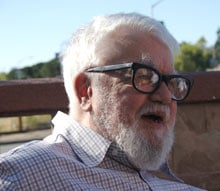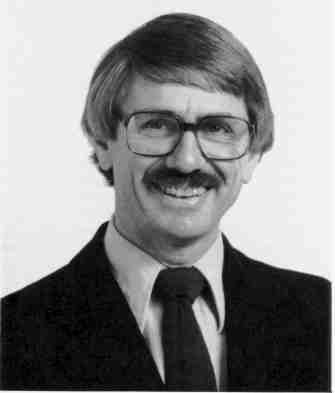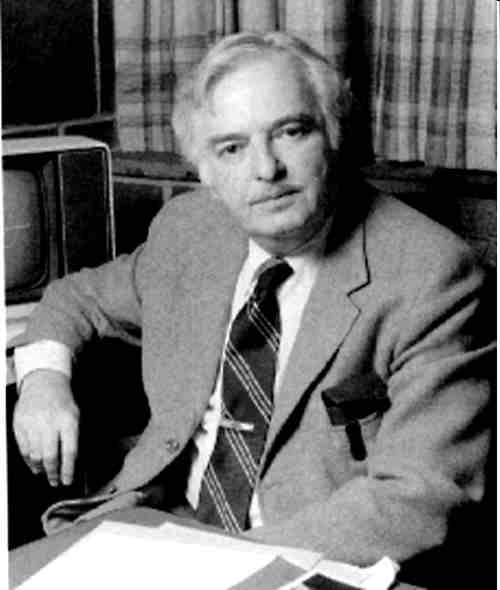Twitter Feed
Convergence: The Catalyst to Transform Scientific Research
by Melvin Greer Greer Institute for Leadership and Innovation A new transformative research approach is gaining global attention and adoption. The scientific opportunities enabled by convergence—the coming together of insights…
Cloud Computing Promises: Fact or Fiction
Cloud computing is currently making information technology headlines, and vendors are aggressively promoting the many benefits it can provide organizations. This White Paper addresses the claims and questions that are…
Super Smart Person’s Guide to Cloud Computing – San Diego
We are offering a fun and educational event just about the cloud. This session will help CEOs, Directors, Managers, and Dilberts learn what the heck the cloud is all about.…
A Managed Services Business Owners Lament: A talk with Joe D.
by Kevin L. Jackson A few days ago I received a call from a small business owner asking if I would meet him for coffee. He wanted to run some…
Technology and the Evolving Workforce
by Melvin Greer Managing Director Greer Institute for Leadership and Innovation According to a Greer Institute Workforce and Talent study, the 2020 workforce is both “the most educated and culturally…
Security attacks and countermeasures
by Sandra K. Johnson Cyber security is rapidly becoming a significant issue in the C-suite as well as the population at large. The results of Dell’s Global Technology Adoption…
ITIL in 7 Minutes!
What is ITIL & how can it benefit your organization? Learn the answers to these questions plus gain an understanding of the ITIL Service Lifecycle in this video. Download a…
How Resilient are FedRAMP Clouds Anyway?
By Jodi Kohut For the uninitiated, FedRAMP is the Federal Risk Authorizationand Management Program, a government-wide program that provides a standardized approach to security assessment, authorization, and continuous monitoring for…
Federal Tech Talk: Cloud Transition Challenges in Government and Industry
Cloud Computing is revolutionizing today’s business marketplace. While “learning the art of the possible”, corporate executives today are struggling with the business and security challenges associate with this important transition. Just…
Cloud, Mobile, Social and Cyber: 2015 Predictions That Will Rock The World (AGAIN!)
2015 PREDICTION TIME!! The worlds of cloud, mobile, social and cyber will continue expanding, permuting and recombining. Their individual effect on society and commerce will become moot as these technological…
(A guest post from Mr. Ray Holloman, NJVC Digital Communications Manager )
 Dr. John McCarthy—In the manner that genius tends to be promiscuous in emerging fields, McCarthy is often given credit as the father or influencer of many things, including Artificial Intelligence, e-commerce and time-share computing—what may be considered the earliest implementation of cloud computing. In 1961, McCarthy famously described the future of networked computing as a utility. “Computing may someday be organized as a public utility, just as the telephone system is a public utility. Each subscriber needs to pay only for the capacity he actually uses, but he has access to all programming languages characteristic of a very large system. … Certain subscribers might offer service to other subscribers. … The computer utility could become the basis of a new and important industry.” McCarthy’s vision of the computing network to come was mainframe—based in a way that somewhat missed the bull’s eye, but hit the right target, regardless of the technology’s name. “We keep inventing new names for timesharing,” McCarthy’s Stanford colleague Les Earnest told the Los Angeles Times when McCarthy died in 2011. (https://www.stanford.edu/~learnest/). “It came to be called servers. … Now we call it cloud computing. That is still just time-sharing. John started it.” For those born in the Internet era, McCarthy’s familiar wobbly bonnet of gray hear and thick, black horn-rimmed glasses marked him as someone of another time, and he was—though he may have been a man of the future rather than the past. McCarthy’s concept of the rise of cloud computing wasn’t perfect—he shortchanged the value of the personal computer—but his implementation of timesharing set a course for cloud computing, which is only just being realized.
Dr. John McCarthy—In the manner that genius tends to be promiscuous in emerging fields, McCarthy is often given credit as the father or influencer of many things, including Artificial Intelligence, e-commerce and time-share computing—what may be considered the earliest implementation of cloud computing. In 1961, McCarthy famously described the future of networked computing as a utility. “Computing may someday be organized as a public utility, just as the telephone system is a public utility. Each subscriber needs to pay only for the capacity he actually uses, but he has access to all programming languages characteristic of a very large system. … Certain subscribers might offer service to other subscribers. … The computer utility could become the basis of a new and important industry.” McCarthy’s vision of the computing network to come was mainframe—based in a way that somewhat missed the bull’s eye, but hit the right target, regardless of the technology’s name. “We keep inventing new names for timesharing,” McCarthy’s Stanford colleague Les Earnest told the Los Angeles Times when McCarthy died in 2011. (https://www.stanford.edu/~learnest/). “It came to be called servers. … Now we call it cloud computing. That is still just time-sharing. John started it.” For those born in the Internet era, McCarthy’s familiar wobbly bonnet of gray hear and thick, black horn-rimmed glasses marked him as someone of another time, and he was—though he may have been a man of the future rather than the past. McCarthy’s concept of the rise of cloud computing wasn’t perfect—he shortchanged the value of the personal computer—but his implementation of timesharing set a course for cloud computing, which is only just being realized.  J.C.R. Licklider—In the late 1950s and early 1960s, even technical lexicon came adorned with the influence of Buck Rogers and the space race. Thus Licklider’s 1962 declaration of a vision that would become the Internet bore the unmistakably audacious and space age sobriquet “Intergalactic Computer Network.” If Licklider spoke on a vast scale, he thought on even broader one, constrained by the bandwidth of the times, not the bandwidth of mind. His Intergalactic Computer Network concept spurred the creation of the Advanced Research Projects Agency Network, a direct ancestor of the modern Internet and the globally connected world. But “Lick,” as he was commonly known, understood the possibilities of cloud computing in a manner more liberating than more utilitarian vision of McCarthy’s early predictions. Licklider saw the possibility of global computing as an element of the human lifescape—a tool of personal connectivity, not merely an agent of business.
J.C.R. Licklider—In the late 1950s and early 1960s, even technical lexicon came adorned with the influence of Buck Rogers and the space race. Thus Licklider’s 1962 declaration of a vision that would become the Internet bore the unmistakably audacious and space age sobriquet “Intergalactic Computer Network.” If Licklider spoke on a vast scale, he thought on even broader one, constrained by the bandwidth of the times, not the bandwidth of mind. His Intergalactic Computer Network concept spurred the creation of the Advanced Research Projects Agency Network, a direct ancestor of the modern Internet and the globally connected world. But “Lick,” as he was commonly known, understood the possibilities of cloud computing in a manner more liberating than more utilitarian vision of McCarthy’s early predictions. Licklider saw the possibility of global computing as an element of the human lifescape—a tool of personal connectivity, not merely an agent of business. Dartmouth Professors Kemeny and Kurtz designed the BASIC programming language to allow students to write programs on the Dartmouth Time Sharing System (DTSS), the first successful, large-scale implementation of time-sharing, in 1964. While the technology was then still called timesharing, the underlying concepts, remote access and shared resources, have the same genetic markers of what is now cloud computing. Kemeny and Kurtz’s introduction of BASIC also underscored another key concept of modern cloud computing—ease of use. By the 1970s, the DTSS supported more than 300 users—and 300 pairs of bellbottoms—simultaneously. The system lasted 35 years, before being deprecated in 1999, and proved the feasibility of the earliest cloud.
Dartmouth Professors Kemeny and Kurtz designed the BASIC programming language to allow students to write programs on the Dartmouth Time Sharing System (DTSS), the first successful, large-scale implementation of time-sharing, in 1964. While the technology was then still called timesharing, the underlying concepts, remote access and shared resources, have the same genetic markers of what is now cloud computing. Kemeny and Kurtz’s introduction of BASIC also underscored another key concept of modern cloud computing—ease of use. By the 1970s, the DTSS supported more than 300 users—and 300 pairs of bellbottoms—simultaneously. The system lasted 35 years, before being deprecated in 1999, and proved the feasibility of the earliest cloud. Vivek Kundra—In the process-driven bureaucracy of federal IT, implementing organizational change can be a little like steering a battleship with a pair of wooden oars. But Kundra, the nation’s first federal CIO, managed to leave an enterprise-level legacy during his two-and-a-half-year tenure, highlighted most pointedly by the acceptance of cloud in the federal IT vocabulary. Kundra’s “25 Point Implementation Plan to Reform Federal IT,” remains a core vision statement in federal IT; his cloud-first mandate one of era-markers in government infrastructure. Perhaps his greatest contribution, though, was simply consensus building, gaining acceptance for cloud computing among federal leadership through something of a charisma crusade. “The force of his personality [led] to the rapid adoption of cloud computing as a major driver of reform,” NJVC Vice President and General Manager, Cloud Services, Kevin L. Jackson wrote in 2011. While the returns on Kundra’s initiatives remain uncertain, the first chapter of the book of federal cloud will be littered with references to his work.
Vivek Kundra—In the process-driven bureaucracy of federal IT, implementing organizational change can be a little like steering a battleship with a pair of wooden oars. But Kundra, the nation’s first federal CIO, managed to leave an enterprise-level legacy during his two-and-a-half-year tenure, highlighted most pointedly by the acceptance of cloud in the federal IT vocabulary. Kundra’s “25 Point Implementation Plan to Reform Federal IT,” remains a core vision statement in federal IT; his cloud-first mandate one of era-markers in government infrastructure. Perhaps his greatest contribution, though, was simply consensus building, gaining acceptance for cloud computing among federal leadership through something of a charisma crusade. “The force of his personality [led] to the rapid adoption of cloud computing as a major driver of reform,” NJVC Vice President and General Manager, Cloud Services, Kevin L. Jackson wrote in 2011. While the returns on Kundra’s initiatives remain uncertain, the first chapter of the book of federal cloud will be littered with references to his work.

( Thank you. If you enjoyed this article, get free updates by email or RSS – © Copyright Kevin L. Jackson 2012)
–> –> –>
3 Comments
Cloud Computing
- CPUcoin Expands CPU/GPU Power Sharing with Cudo Ventures Enterprise Network Partnership
- CPUcoin Expands CPU/GPU Power Sharing with Cudo Ventures Enterprise Network Partnership
- Route1 Announces Q2 2019 Financial Results
- CPUcoin Expands CPU/GPU Power Sharing with Cudo Ventures Enterprise Network Partnership
- ChannelAdvisor to Present at the D.A. Davidson 18th Annual Technology Conference
Cybersecurity
- Route1 Announces Q2 2019 Financial Results
- FIRST US BANCSHARES, INC. DECLARES CASH DIVIDEND
- Business Continuity Management Planning Solution Market is Expected to Grow ~ US$ 1.6 Bn by the end of 2029 - PMR
- Atos delivers Quantum-Learning-as-a-Service to Xofia to enable artificial intelligence solutions
- New Ares IoT Botnet discovered on Android OS based Set-Top Boxes


Very useful information is provided in this post about cloud computing.
http://netactivity.us/cloud-services.htm
thanks for sharing great knowledge of cloud computing.
http://umbrellainfocare.com/
I am very thankful to the author to write this fruitful information.It is worth sharing for other users.Thanks once again. register your tuition class online